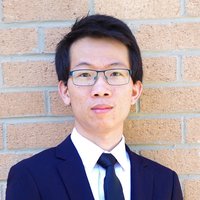
2021 Post-doctoral Non-clinical Fellowship
Investigating gait-phase dependent adaptive deep brain stimulation and neurofeedback training for patients with gait disturbances
Apart from symptoms such as slow and/or stiff movements, many patients with Parkinson’s disease can also have difficulties with gait. Currently, continuous deep brain stimulation is an effective treatment for many symptoms of Parkinson’s disease, but for gait, the effect is less consistent and could even make it worse. Previous work reported that electrical waves deep in the brain varied in time with stepping, alternating between left and right sides, and this alternating effect was stronger with more regular stepping in patients with less gait difficulties. Furthermore, a type of brain stimulation that mimics this natural alternating activity could modify stepping in patients with Parkinson’s disease. These together lead to the hypothesis of this project: facilitating this alternating pattern could improve gait. I will be testing this hypothesis through two interventions, including Gait-phase dependent adaptive deep brain stimulation, and neurofeedback training. The overall goal of this project is to better understand the relationship between the observed brain patterns and gait, as well as to improve therapy for gait difficulties.

Gait-phase dependent adaptive deep brain stimulation (A) and neurofeedback training (B) for facilitating gait.
Follow up after fellowship:
Shenghong has been awarded a Senior Research Fellowship from Parkinson's UK. This 3 year fellowship will be studying deep brain stimulation and focused ultrasound stimulation for parkinsonian tremor and gait.
Publications
Gait-phase modulates alpha and beta oscillations in the pedunculopontine nucleus
Journal of Neuroscience. 2021 Oct 6;41(40):8390-402
Oct 2021
Entraining stepping movements of Parkinson's patients to alternating subthalamic nucleus deep brain stimulation
Journal of Neuroscience. 2020 Nov 11;40(46):8964-72
Nov 2020
Beta-triggered adaptive deep brain stimulation during reaching movement in Parkinson's disease
Brain, 146(12), pp 5015–5030, Dec 2023
Dec 2023
The potential of convolutional neural networks for identifying neural states based on electrophysiological signals: experiments on synthetic and real patient data
Front Hum Neurosci, vol 17, p.1134599
2023
Explainable and advanced intelligent processing in the brain-machine interaction
Front Hum Neurosci, vol 17
2023
An adaptive brain-computer interface to enhance motor recovery after stroke
IEEE Trans Neural Syst Rehabil Eng. 2023 May 2
2023
Clinical neuromodulatory effects of deep brain stimulation in disorder of consciousness: A literature review
CNS Neuroscience & Therapeutics
2023
Average power and burst analysis revealed complementary information on drug-related changes of motor performance in Parkinson’s disease
NPJ Parkinsons Dis, 9(1), p.93, https://doi.org/10.1038/s41531-023-00540-x
2023
A review of motor brain-computer interfaces using intracranial Electroencephalography based on surface electrodes and depth electrodes
TechRxiv. Preprint. https://doi.org/10.36227/techrxiv.22340677.v1
2023
Hyper-parameter tuning and feature extraction for asynchronous action detection from sub-thalamic nucleus local field potentials
Front Hum Neurosci, 17:1111590, May 2023
2023
Evoked resonant neural activity in subthalamic local field potentials reflects basal ganglia network dynamics
Neurobiol Dis, vol. 178, pp. 106019, Mar 2023
2023
Tailoring Human Sleep: selective alteration through Brainstem Arousal Circuit Stimulation
medRxiv, Dec 2022
2022
Subthalamic Nucleus Stimulation–Induced Local Field Potential Changes in Dystonia
Mov Disord, Dec. 2022
2022
Modulation of Limbic Resting State Networks by Subthalamic Nucleus Deep Brain Stimulation
Netw Neurosci, Dec. 2022
2022